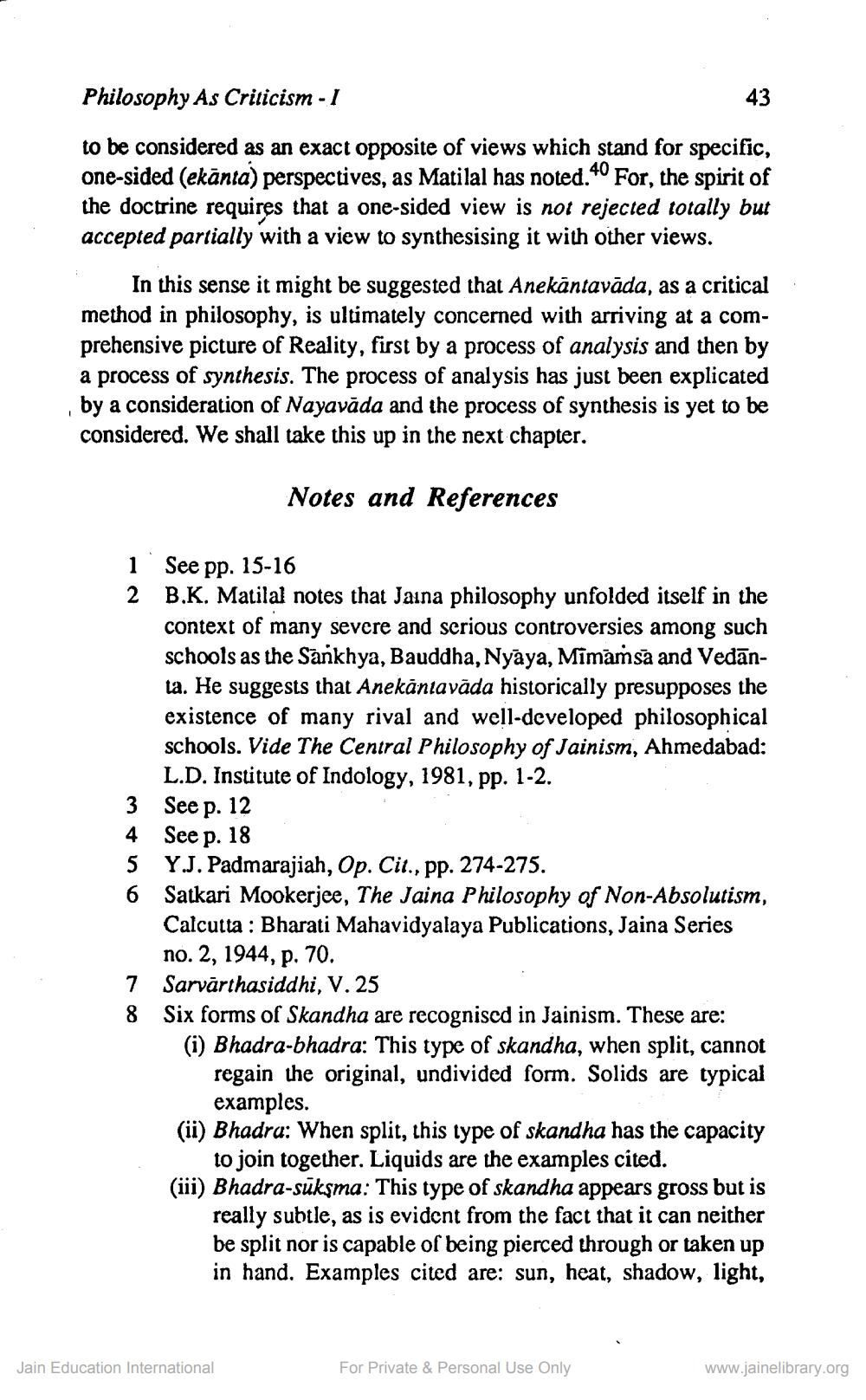________________
Philosophy As Criticism - I
to be considered as an exact opposite of views which stand for specific, one-sided (ekānta) perspectives, as Matilal has noted. * For, the spirit of the doctrine requires that a one-sided view is not rejected totally but accepted partially with a view to synthesising it with other views.
In this sense it might be suggested that Anekantavāda, as a critical method in philosophy, is ultimately concerned with arriving at a comprehensive picture of Reality, first by a process of analysis and then by a process of synthesis. The process of analysis has just been explicated by a consideration of Nayavāda and the process of synthesis is yet to be considered. We shall take this up in the next chapter.
Notes and References
1See pp. 15-16 2 B.K. Malilal notes that Jaina philosophy unfolded itself in the
context of many severe and serious controversies among such schools as the Sankhya, Bauddha, Nyaya, Mimamsa and Vedānta. He suggests that Anekāntavāda historically presupposes the existence of many rival and well-developed philosophical schools. Vide The Central Philosophy of Jainism, Ahmedabad:
L.D. Institute of Indology, 1981, pp. 1-2. 3 See p. 12 4 See p. 18
Y.J. Padmarajiah, Op. Cit., pp. 274-275. Satkari Mookerjee, The Jaina Philosophy of Non-Absolutism, Calcutta : Bharati Mahavidyalaya Publications, Jaina Series
no. 2, 1944, p. 70. 7 Sarvārthasiddhi, V.25 8 Six forms of Skandha are recognised in Jainism. These are:
(i) Bhadra-bhadra: This type of skandha, when split, cannot
regain the original, undivided form. Solids are typical
examples. (ii) Bhadra: When split, this type of skandha has the capacity
to join together. Liquids are the examples cited. (iii) Bhadra-sūksma: This type of skandha appears gross but is
really subtle, as is evident from the fact that it can neither be split nor is capable of being pierced through or taken up in hand. Examples cited are: sun, heat, shadow, light,
Jain Education International
For Private & Personal Use Only
www.jainelibrary.org




